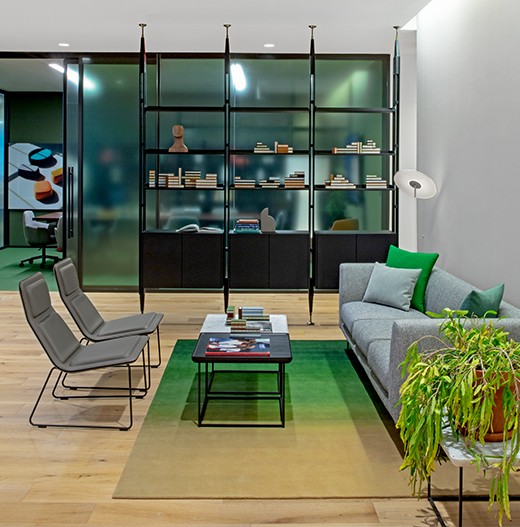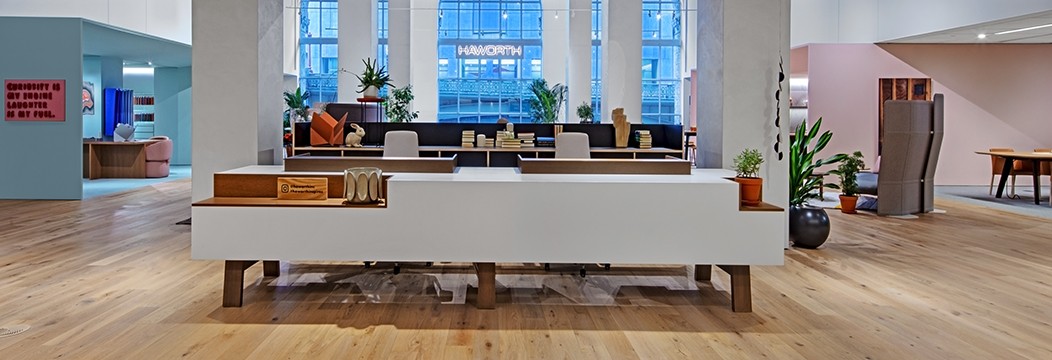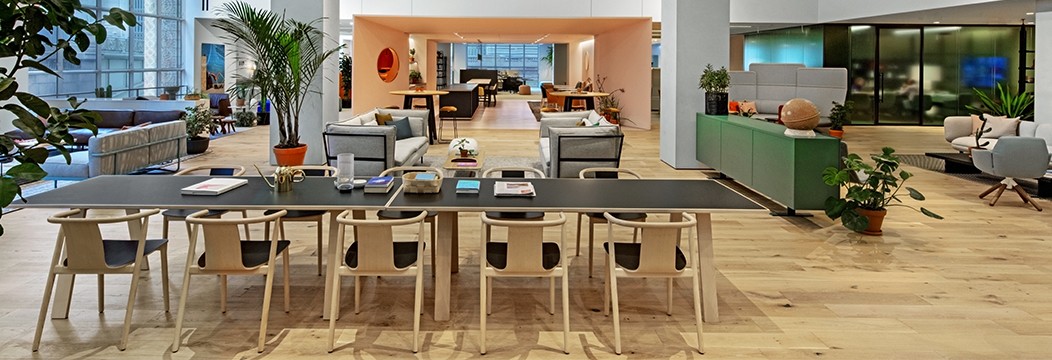Haworth showrooms reflect our latest research into the evolving ways people work. Perhaps nowhere is the evolution of workstyles changing faster than New York City. In 2018, we overhauled our 30,000 square foot New York showroom to embody current workstyles as well as future trends.
Located across from Grand Central Station in Manhattan, this setting supports a variety of functions: a showcase for our interior solutions where our customers get inspired for their own space transformation; a workplace for our NYC sales force; and a venue for events—from learning activities to celebrations.
Through our partnership with designer Patricia Urquiola, we created an Organic Workspace®, starting by identifying our goals for the showroom renovation. Three objectives fueled the design, bringing our brand to life via workspace design and incorporating our global research team’s latest findings.
1. Hospitality – enriching the employee and customer experience
2. Innovation – optimizing the workplace to foster creativity and innovation
3. Well-Being – planning workspaces to promote well-being
The result is space that emphasizes connectivity, with New York’s permeating, city-that-never-sleeps energy underlying the showroom experience.
A Welcoming Destination
Hospitality in the workplace emerges from multiple perspectives—welcoming customers, employees, suppliers, and guests in ways that visually express Haworth's unique combination of design leadership, family ownership, and global expertise.
The main entrance of the New York showroom sets the stage with a vibe that delivers the first impression. Our Welcome Center was designed to not only reflect Haworth’s brand, but also inspire our customers with versatile, thoughtful solutions—this is where workplace hospitality begins. This entry point is a combination of spaces that welcome guests, enable socializing and dining, and support collaborative work.
Hospitality in the workplace extends beyond the entry—it is infused through the entire environment. It’s about hiring Gen Z, retaining Millennials, and keeping Gen Xers and Baby Boomers longer as mentors and sharers of historical context. It’s also about creating destination workplaces where boundaries between work, social time, and downtime begin to blur.
Creativity, Coworking, and Innovation
As companies look for new ways to foster creativity and innovation, they are examining how to bring the coworking concept in-house by adopting coworking-like philosophies, amenities, and work policies. Coined “corpoworking,” the approach is serving as a talent attraction and engagement tool for a growing number of companies. Coworking has become less about the sharing of infrastructure and real estate cost, and more about belonging to a community—sharing ideas with people, and melding life and work in a sustainable way. Its participants value flexibility and choice. And technology enables people to work where they want, when they want, and surrounded by whom they want.
Haworth’s global research team has determined that if we never rest, can’t focus, or don't work with each other, we miss out on finding new ideas and fail to execute them. Organizations that value and design workplaces supporting these activities can improve their innovation efforts. Enabling people to expand on opportunities for both divergent thinking (spontaneous, expansive idea generation) and convergent thinking (focusing, narrowing of ideas) is critical for innovation to happen.
In our showroom we’ve identified four zones that exemplify our research in a “corpoworking” space. All four zones support a spectrum of needs from focus to restorative to collaborative, whether for individual or group activities.
Nurture the Heart, Mind, and Body
Well-being encompasses more than physical health. It also includes psychological comfort and cognitive support. A key strategy behind workplace design for well-being is to offer people choice—choosing the work environment that best suits their needs to feel more engaged and connected. The diversity of choice within a space stems from the culture of your organization, and, oftentimes, from the sub-culture of the team occupying the space. Is the team highly process driven? Do they thrive when collaborating? Are they highly competitive and work solo or do they prefer a combination of restorative and open areas?
Our New York showroom offers a variety of spaces to give people choice. The assigned workstations highlight both individual and group work with a range of privacy, scale, and adjacencies to support what different workstyles need to be most effective.
In the heart of the showroom is the kitchen—what we call a “refresh” area—a carefully curated social spacethat encourages impromptu discussions and interaction. Whether our team or their guests enjoy a quiet cup of coffee or catch up on weekend activities with friends, this space is designed to provide a comfortable respite from the frenetic activity elsewhere in the office. It is the space that truly exemplifies the evolution of work-life balance to today’s “fluid self”—a melding of work, social, and personal in one.
The New York showroom is one example of how we apply our research to our own workspaces to provide environments that foster creativity, leading to new, innovative solutions. When you consider how the workspace is an extension of your brand—the physical connection your customers and employees experience when they are in your space—it makes sense to build consistency, as this approach has the potential to drive your business forward.
We’ve partnered with several customers to align their brand message with their workspace, in different regions around the world. To see how, check out our case studies with Mountain Equipment Co-op (MEC), Dairy Farmers of America, and EPM Business Group.






